11.11 Big Sale for Cloud. Get unbeatable offers with up to 90% off on cloud servers and up to a $300 rebate for all products! Click here to learn more.
By Bei Ling, Kun Qi, and Ming Yi, representing Alibaba's New Retail and Taobao Technology Department.

For a long time, Alibaba's Taobao mobile app in China primarily used push notifications as the main channel for pushing user traffic to platform promotions and events. However, today, as e-commerce platform competition has grown all the more fierce, and user penetration on Taobao has hit record-high saturation, the focus on Taobao has shifted to more refined operation methods and more intelligent delivery capabilities. This new shift is not only for the present but also represents a larger trend for even more upgrades and optimizations in Taobao in the future.
As of this year, the Taobao technology department team have already started to revamp how notifications work on Taobao mobile in terms of all platform interactions, the technical architecture, and delivery algorithms. It is our goal, as the Tabao team, that the push notification feature can come to assume many different roles, including personalized user marketing, user registration and activation, and business diversion in daily platform operations and promotions.
But, you may ask, how have these system upgrades and optimizations played out on the platform? For example, what sort of effect did they have during the last big promotion on June 18? And what are our thoughts and what did we discover? Well, read on to know the answers.
In China, Taobao mobile is easily one of the most popular apps, with push notifications reaching a huge number of people. In fact, there's hundreds of millions of eyeballs staring at Taobao notifications every day. Therefore, it's undeniable that the push notification feature set of Taobao is an extremely important channel for directing user traffic on the app.
However, nowadays we expect more out of the push notifications. Besides serving as a channel for reaching more shoppers, push notifications should also be able to give pointed and personal recommendations, knowing each and every platform user well, acting like a personal assistant. In reality, push notifications can be implemented based on rich content, a deep understanding of platform users, and personalized operation and distribution capabilities.
The push feature of Taobao mobile classifies push notification messages into marketing messages, product notifications, and instant messages (IMs). Marketing messages are further classified into messages that are personalized, targeted, or general. The following figure shows some examples of push notification messages.
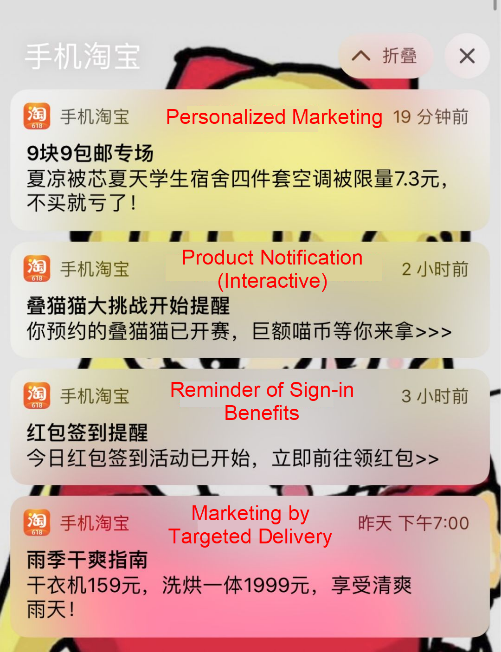
In terms of how traffic works on Taobao, the delivery of push notifications has gone through a dramatic transformation from general to targeted, and then from targeted to personalized notifications. Behind all of this, algorithms are used to filter user groups, which have allowed Taobao notifications to pull a complete 180, going from the shoppers searching for content to content searching for potential shoppers.
With the upgrade implemented in this year, we have set up a personalized online computing engine that is more powerful for content delivery. After performing a lot of AB experiments and testing during big promotions on the Taobao platform, we have successfully switched the main system of push notifications from targeted to personalized delivery, providing personalization in terms of time, content, and frequency.
The following figure shows the differences between the three delivery methods in Taobao's push notification evolution. In addition to increasing the turn-over efficiency of push notifications, improved delivery methods also provided an enhanced user experience through reducing unwanted notifications and refining the specificity of message content.
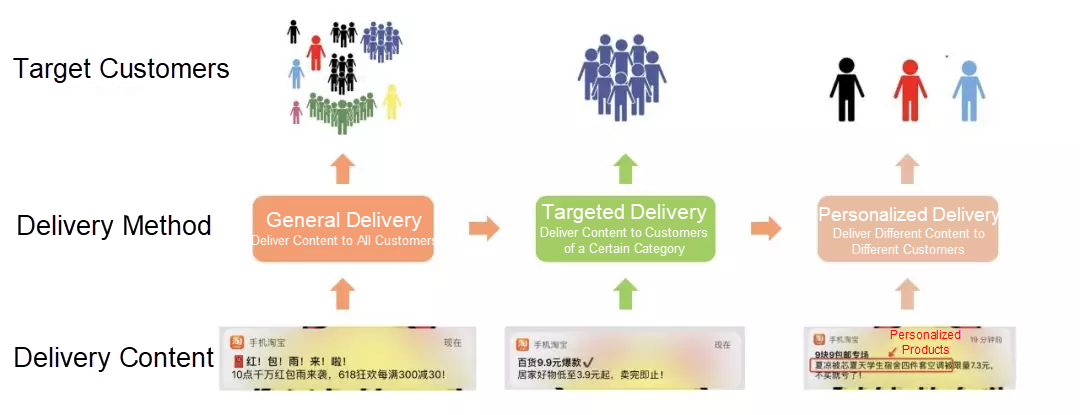
The fundamental capability and purpose of any mobile app push notification system is to deliver content. For general applications, push notifications serve as a content distribution system and channel for system recommendations. Both of these can help to increase activity on the app and views through a higher click rate. However, for mobile Taobao, push notifications also need to deliver content specific to different customers and appropriately allocate traffic based on the requirements of the platform, customers, and users. Therefore, the push feature of mobile Taobao also incorporates many features of an associated advertising system.
As shown in the following figure, the overall algorithm architecture consists of the delivery matching and traffic shaping modules that are built separately. In addition, a third module named intelligent delivery is also built to determine the delivery time.

Traffic delivery matching: This module is used to match users and content. We select content and products that are most relevant to users from the material library. For example, if f(U,X) indicates the estimated rate that user U opens the delivered content X, this module selects content that has the highest estimated open rate for subsequent deliveries.
From the system perspective, the entire process is divided into two steps, recalling and sorting. However, this module is different from traditional recommendation and distribution systems in the following aspects:
Traffic shaping decision-making: This module collects user information and content push information to meet certain constraints such as the fatigue and traffic assurance of customers. In addition, this module incorporates these constraints into the algorithm model for optimization.
Assume that M indicates a material, U indicates a user, MU indicates the delivery of the material to the user, and X indicates a delivered content item.
The optimizations and constraints for the final content to be delivered are as follows:

The h function considers fitting the estimated open rate f(U,X), the sent traffic of U, and the sent traffic of MU. The g function considers optimizing the allocation of the sent traffic of M. Finally, both functions are optimized and learned in a supervised manner to obtain the optimal solution so that the overall traffic allocation can achieve the best performance in terms of traffic, user fatigue, content diversity, and global open rate.
Intelligent delivery: For push notifications, besides message content, the time of the push notification is also very important. Timeliness, or time appropriateness, is required for implementing intelligent delivery. This is, content should be pushed at the time when users are most likely to open the content and will feel least disturbed. With traditional general or targeted delivery, content is delivered at fixed times regardless of the user's habits.
To correct this shortcoming, we added an intelligent delivery module at the upstream of the delivery system to determine a personalized push time for each user. Before content is delivered, the intelligent delivery module estimates the best push time for each user, and then triggers the content selection and delivery system at the estimated time.
For a user, optimization of the delivery time can be abstracted as the process of estimating the open rate of push messages in different time segments and then selecting the best solution. However, in practice, it is impossible to forcibly solve and traverse all the time points, and traffic cannot be centralized at a single time point, which may cause system errors. The final approach is to select a set (T) of candidate time points based on real-time characteristics, such as the user's usage or lack thereof on the current day, and then train an estimated model f to select the best point in time as the delivery time for this user on this day.
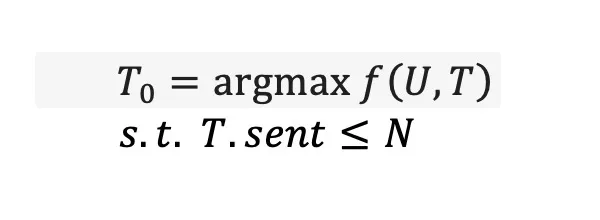
Compared with delivery at fixed time and at random time, the open rate of delivery at the time intelligently determined based on scenarios can increase by 10% and 20% respectively, which effectively enhances the utilization of messages. Pushing notification content at the appropriate time also helps reduce disturbance to users and the load pressure of the entire system.
Optimization in disturbance caused by messages:lgorithms are used to predict the value of each message for users. In this way, we can filter certain messages that are less valuable to users and reduce potential disturbance without affecting the overall open rate. With the new optimizations, sent messages were reduced by 40% yet the average open rate was unaffected.
The big promotion on June 18, known in China as 6.18, is an important shopping and marketing event every year, and in many ways is also a rehearsal for the even larger Double 11 shopping festival held at the end of each year. For the big promotion on this time when we first released the new evolution of our push notification system, we set up a special team to provide key support for the promotion. In addition to the preceding upgrades and optimizations, we also transformed and upgraded related capabilities specifically related to the big promotion.
By transforming our system of push notifications, we worked hard to guarantee incoming traffic for the big promotion through two core capabilities: the real-time delivery and dynamic targeting of push notifications.
The delivery targets were determined based on what was going on during big promotion in real time, with metrics such as the gross merchandise volume (GMV) and the supply and demand of traffic being monitored. It can be difficult for offline algorithms to support such temporary delivery tasks. However, after a series of real-time transformations in the early phase and the survey on temporary demands of the big promotion, the maneuvering strategy function for the big promotion was launched, which is used to implement a series of real-time capabilities, selecting delivery targets and content, and starting a delivery based on temporary or maneuvering demands on the day of the big promotion.
Consider this example, for instance. On June 18, real-time delivery tasks were created to deliver personalized content to target customers who added products to their shopping carts but did not purchase the products. These targeted notifications can help to increase the conversion of potential purchases. We compared the deliveries of manually selected content, randomly selected content, and personalized content selected by algorithms. The following figure shows the experiment scheme.

The following figure shows how the algorithms improved the delivery efficiency in the three-day-long promotion. Among the three tasks, the open rate achieved by algorithm-based delivery was much higher than that of the open rates achieved by general and random delivery notifications. This therefore proves that the algorithm was of great benefit for reaching the business objectives of the big promotion in terms of efficiency improvements and real-time intervention. In the struggle for traffic during big promotion sales, we hope to reach users in a more targeted and efficient way to help them find more effective information and reduce the interference of useless information.
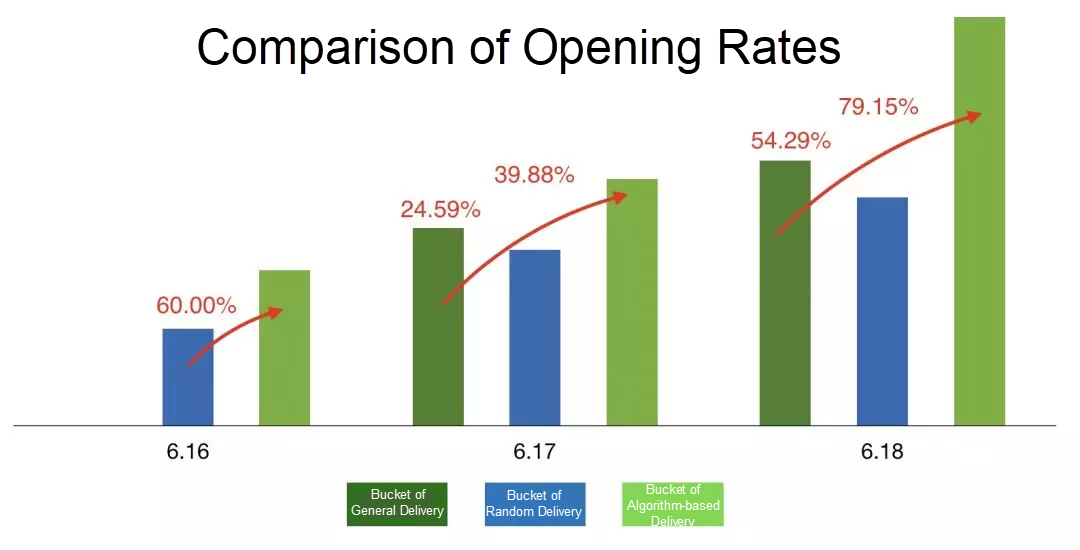
Marketing content in big promotions: As you probably already know, a big promotion can be understood as a type of shopping festival for e-commerce users. Therefore, the focus of marketing must be different to traditional shopping festival. Following this, we hope that changes in marketing content can be made in real time and learned dynamically through user behaviors.
During the big promotion on June 18, content was delivered across the entire industry. Based on data analysis, more specifically through comparison between the content delivered by the push notification system during the promotion with content delivered on an average day, we learned that users tend to show more interest in more expensive products during big promotions, whereas on a daily basis they tend towards cheaper items. These changes in user demands can also be captured through real-time algorithm learning and thereby help us to adjust or change push notification deliveries and further improve traffic efficiency during promotions.
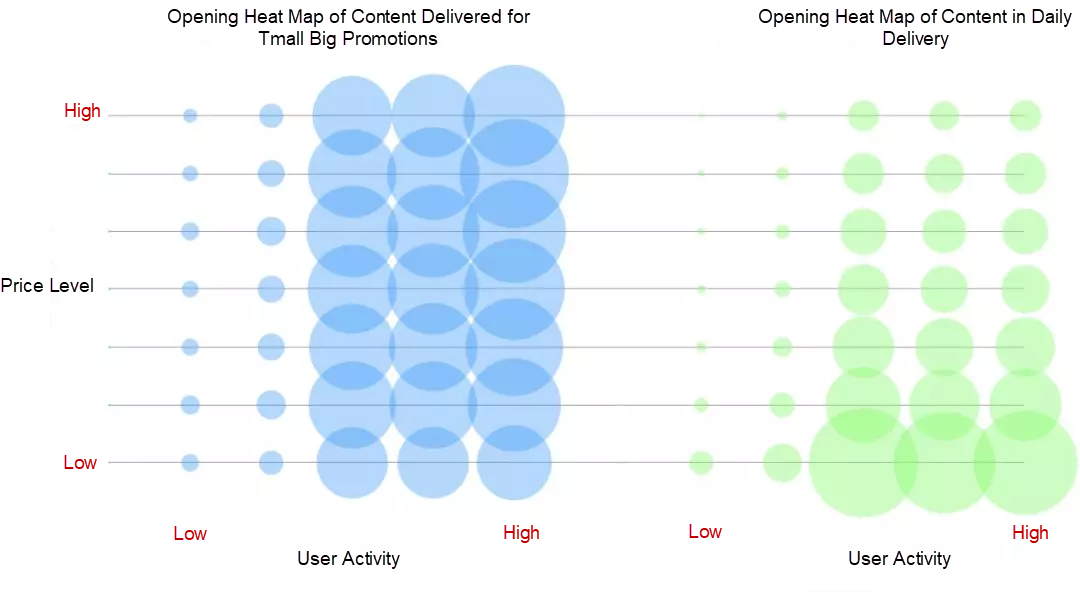
To summarize, the push notification feature of the Taobao mobile app is designed to provide users with desired content at appropriate times, and establish a stable mechanism for user expectations and feedback, and form an effective and closed product loop.
In the future, we will continue to upgrade and optimize push notifications, mainly in terms of the three following key factors:
An Alibaba Cloud Technical Expert's Insight Into Domain-driven Design: Domain Primitive
Alibaba Clouder - April 1, 2021
Alibaba Cloud MaxCompute - February 28, 2020
Alibaba Clouder - July 8, 2020
淘系技术 - November 4, 2020
XianYu Tech - September 10, 2020
XianYu Tech - June 22, 2020
 Black Friday Cloud Services Sale
Black Friday Cloud Services Sale
Get started on cloud with $1. Start your cloud innovation journey here and now.
Learn More Platform For AI
Platform For AI
A platform that provides enterprise-level data modeling services based on machine learning algorithms to quickly meet your needs for data-driven operations.
Learn More Livestreaming for E-Commerce Solution
Livestreaming for E-Commerce Solution
Set up an all-in-one live shopping platform quickly and simply and bring the in-person shopping experience to online audiences through a fast and reliable global network
Learn MoreMore Posts by 淘系技术